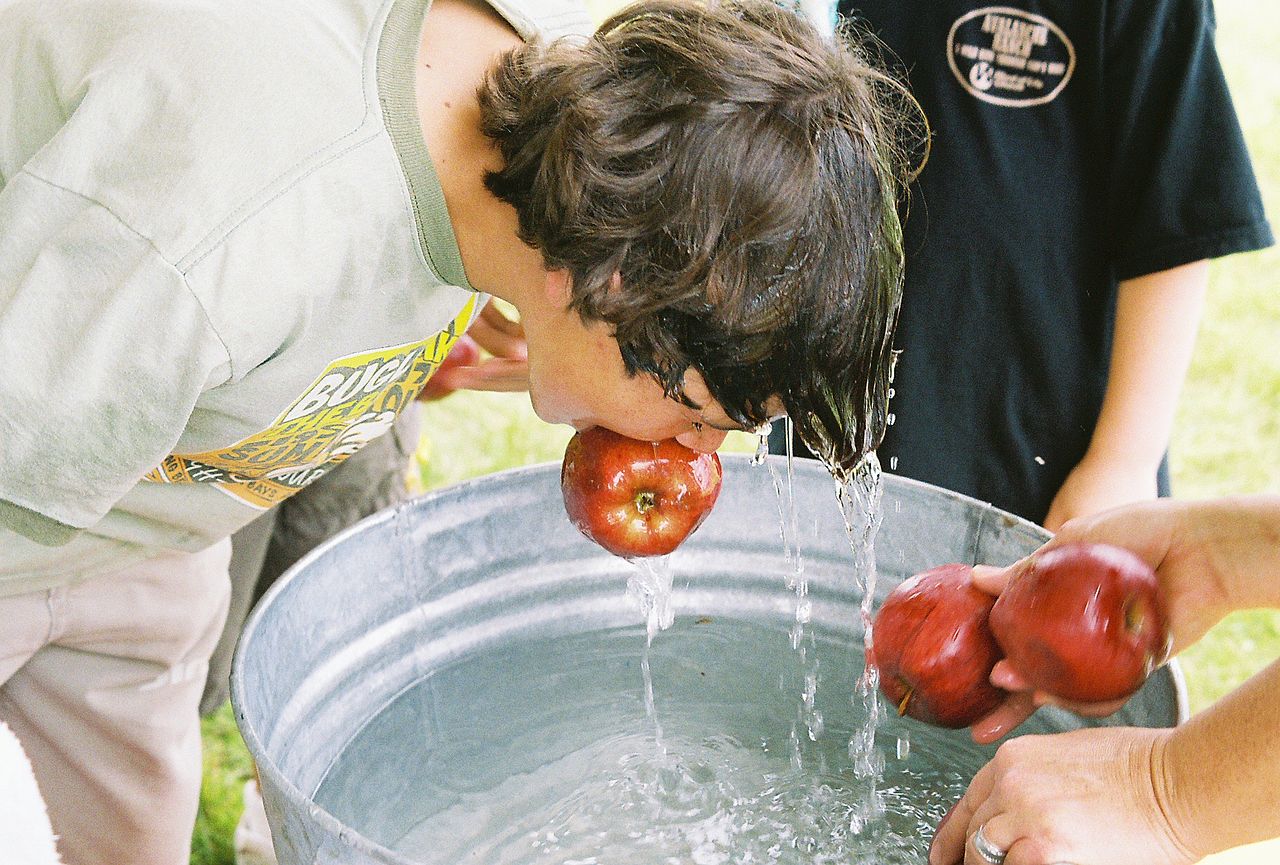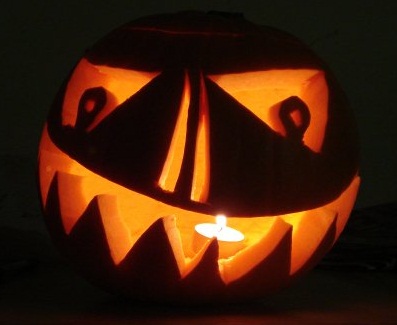Samhain
Samhain (or Hallowe’en as it is now known) is the most well-known of Irish festivals. Like the Mexican Day of the Dead (Día de los Muertos), it has become associated with the Christian holiday of All Saints’ Day. However, it can be traced back to an ancient pagan harvest celebration. It is one of the four seasonal or quarterly festivals, the others being Imbolc (31st January), Bealtaine (30th April) and Lughnasa (31st July).
It is probable that Samhain originally denoted the end of summer. The word is believed to derive from the prefix sam-, from which we get the modern Irish word samhradh ‘summer’. Winter was the most dangerous time of the year, when food was scarcest and the old, young and sickly were vulnerable to sickness and death. Samhain was believed to be the night when the borders between the síd (the Otherworld) and the mortal world were opened and evil spirits would pass over to cause mischief. Stories of frightening apparitions abounded. The púca (a nature spirit that could be either malicious or benevolent) and the bean sí (the ‘banshee’ or fairy woman who appeared as a harbinger of death) were thought to haunt dark roads and graveyards on Samhain.
Samhain was an annual ritual which allowed people to light bonfires, dance and feast on the fruits of the harvest. Playing games, such as bobbing for apples was a common way of celebrating the occasion.
In addition to the sweets, fruits and nuts that are consumed today, traditional dishes like colcannon and barmbrack are associated with Samhain. Colcannon (cál ceannann, meaning ‘white-headed kale’) is commonly made with mashed potato and cabbage or kale. Barmbrack (báirín breac, meaning ‘speckled loaf’) is a sweet bread made with dried fruit such as sultanas and raisins. Often wedding rings or other trinkets are placed in the barmbrack to signify the fate of the person who finds it. This is a remnant of divination rituals which were commonly practised at Samhain. One game involved placing different objects in saucers. The blindfolded player would pick a saucer at random and the item chosen would represent their future. A ring stood for marriage, water meant travel, and a thimble or a piece of wood stood for prospective trades such as dressmaking or carpentry.
Turnip-carving was also practiced at Samhain. This involved hollowing out a turnip and placing a candle inside as a makeshift lantern. Revellers would also shape the turnip into terrifying facial expressions. This tradition was exported to America where pumpkins replaced turnips and became the most recognisable image associated with modern Hallowe’en – the jack-o-lantern.
It is the spirit of playing tricks which is most notable about Samhain. The phrase ‘trick or treat’ reflects a tradition of people pulling pranks on their neighbours. Traditionally, these pranks had a ghoulish connection with death and were performed by people as a means of symbolically purging a fear of their own mortality. Ultimately Samhain is about forgetting about our troubles and the long winter ahead, and enjoying some macabre merrymaking.
Photos courtesy of WikiCommons


